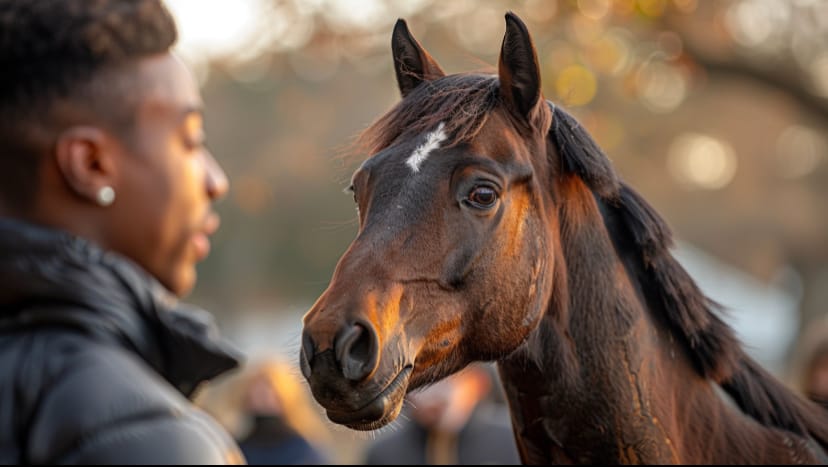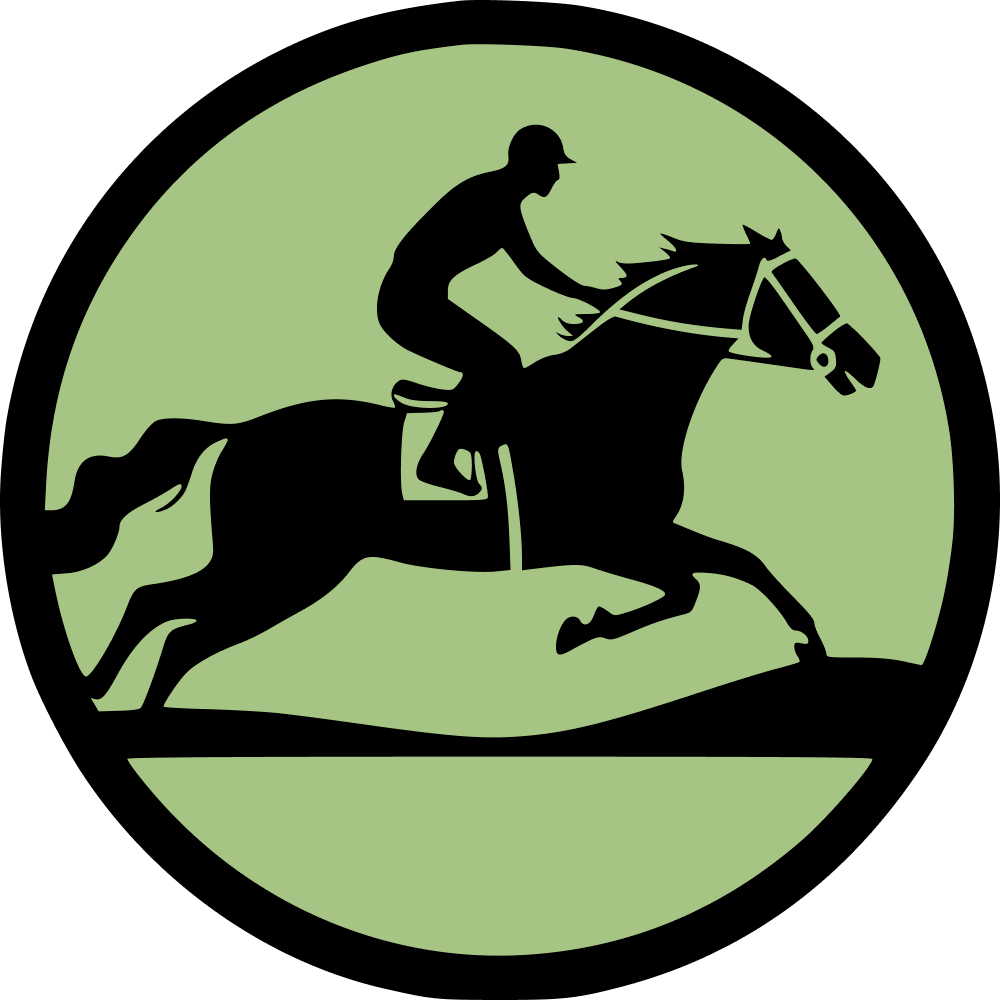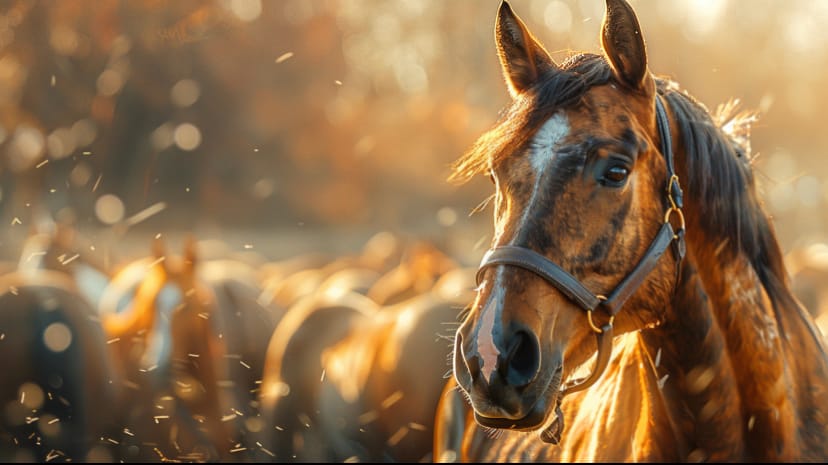- During the Thoroughbred Census in Britain, a total of 8,256 horses were officially documented. Among them, 5,566 horses were identified for the first time and had not been previously recorded.
- The 2023 Census, conducted by Hartpury University, has provided valuable insights into the lives of Thoroughbreds once they retire from racing.
- The findings have confirmed the remarkable adaptability of race-bred horses as they transition into various second careers.
- The results revealed that approximately one-third of these horses are 15 years or older, and a significant number continue to be owned by their original owners even after their racing careers.
- By combining the data from equestrian association bodies, researchers now possess knowledge about approximately 80% of the former racehorse population.
- The Horse Welfare Board has outlined its plans to establish complete traceability for racehorses starting from their transition out of the sport.
- The Thoroughbred Census was financially supported by The Racing Foundation through a three-year, £3 million grant, which aims to assist the work of the British racing's Horse Welfare Board.
During Britain's inaugural Thoroughbred Census, owners of 8,256 former racehorses provided detailed information, revealing that 5,566 of these horses were previously undocumented. The Horse Welfare Board (HWB) of British racing launched this initiative to gather significant insights into the post-racing lives of Thoroughbreds.
One of the primary objectives of the Thoroughbred Census was to bridge the gap between the estimated and actual population of British Thoroughbreds. As a result of the Census, Hartpury University has determined that the population of former racehorses amounts to 33,600. By combining the new Census data with information from the 13,000 members of Retraining of Racehorses (RoR), as well as data from equestrian associations, the intelligence database now covers an estimated 80% of the former racehorse population residing in Great Britain.
Dr. Neil Hudson MP, the sole veterinary surgeon in the House of Commons, expressed his approval of this significant development in enhancing traceability. He emphasised the importance of continued collaboration between the government and the racing industry to implement crucial initiatives that promote the welfare of Thoroughbreds, both during their racing careers and after retirement. A central Digital Equine Database is seen as a crucial step forward in achieving this goal.

Enhancing Traceability: The Roadmap for Future Advancements
Whilst there was active participation from individuals connected to horse racing, the Census revealed that there were gaps in contributions from broader equestrian communities and disciplines. As a result, the Horse Welfare Board, in collaboration with RoR, is currently developing customised plans to establish better connections with these underrepresented groups. They will also collaborate with equestrian member bodies and associations to reduce any knowledge gaps.
The report also presents additional recommendations to enhance traceability in the future, which include:
1. Conducting another Census: The HWB aims to repeat the Census within a timeframe of 3-5 years.
2. Establishing a mechanism to ensure that 100% of horses can be traced when they leave racing: The objective is to link the data from the sport's National Racing Administration System with the RoR database. This will automatically enrol all Thoroughbreds that retire from racing, along with their new owners, with RoR.
3. Central Equine Database (CED): Racing will continue to advocate for the government's further development of a Central Equine Database that can effectively serve as a repository for data on all Thoroughbreds throughout their lives, thus improving traceability.
4. Defra Digital Equine ID: Ongoing efforts will be made to persuade the government to move away from traditional paper passports and establish a mandatory Digital Equine ID.
Tracey Crouch CBE, MP, and independent member of the Horse Welfare Board, expressed these points:
“We are delighted that Britain’s inaugural Thoroughbred Census has enhanced our intelligence on the country’s Thoroughbred population. The report has also generated valuable recommendations for further improvements, some of which we will be pushing the Government to support.”
The Extraordinary Tales and Versatility of Former Racehorses
According to the analysis of data gathered in the first Thoroughbred Census, it was found that nearly two-thirds (62.9%) of the former racehorse population fall within the age range of 5 to 14. Approximately one-third (31.2%) are aged 15 years or older, including 739 Thoroughbreds aged 20 years or more, which demonstrates that racehorses often live long lives beyond their racing careers.
The majority of registered horses (74%) are geldings, likely because mares and fillies often transition into stud work as their second careers and are therefore not included in the Census. The most common reason given by owners for their horses leaving racing was poor performance and/or a lack of aptitude for the sport.
After retiring from racing, Thoroughbreds participate in a wide range of activities. This includes dressage (11%), showjumping (8%), and eventing (8%). However, the majority of retired racehorses are used for leisure riding, hacking, and unaffiliated competitions (36%). The variety of activities reflects how well a racing career prepares Thoroughbreds for other disciplines. Interestingly, almost as many horses transition into equine-assisted activities, such as therapy, as those who engage in endurance riding.
Helena Flynn, the Programme Director of the Horse Welfare Board, commented on these findings:
"The Thoroughbred Census represents an important milestone in British racing's commitment to improve the traceability of all former racehorses after they leave the sport. It also enriches our intelligence about what these horses go on to do. It is often misperceived that Thoroughbreds who are not successful in racing are discarded as they are unable to adapt to other roles, however, the Census results showcase their incredible versatility and their ability to thrive in a host of new careers."

Implementation and Benefits of Equine Passports
The equine identification document, known as the passport, serves as the primary means of tracing horses in Great Britain. According to the law, new owners of any horse must update their passports within 30 days of acquiring the horse. The Weatherbys General Stud Book is responsible for maintaining and regulating this information during the horses' racing careers, with input from breeders, owners, and trainers. However, the availability of data for former racehorses significantly decreases once they transition into private ownership after retiring from racing.
Although a majority of respondents in the Thoroughbred Census (64%) have changed the ownership details on their horse's passport to reflect their own name, which is considerably higher than the average of 20% across all equestrian disciplines, there is still room for improvement in ensuring better owner compliance in the future.
The Census has revealed several reasons why owners fail to update their horse's passport with new ownership details. These reasons include emotional attachment to the horse (fearing that the passport might get lost), lack of knowledge, circumstances where updating the passport didn't seem necessary at the time, complexities and time-consuming nature of the process, procrastination, and the associated expenses. Furthermore, nearly one-third (30.8%) of owners were not aware of the requirement to update the equine passport in the event of the horse's death, and a majority (75.4%) were unaware that they could be fined for not doing so.
Despite the low compliance rate, most owners (83.5%) expressed willingness to use a new e-passport system to register changes in horse ownership if it were free or involved a minimal fee.
Helena Flynn emphasises the need for better education among owners of former racehorses regarding their responsibility to keep their horses' ID documents up to date, as these horses move into private ownership after retirement from racing. The Horse Welfare Board and RoR plan to implement a communications strategy to raise awareness among owners of former racehorses and remind them of their responsibilities.
While there was no correlation between passport possession and the competitive disciplines undertaken, owners who kept their Thoroughbred as a field companion, or broodmare, or engaged in equine-assisted activities were less likely to have their horse's passport in their possession. This highlights the need for increased education on the importance of equine passports and the necessity of keeping them up to date. The Census campaign has partially achieved this goal, as the Weatherbys General Stud Book reported a 34% increase in passport updates compared to the same period in the previous year.

